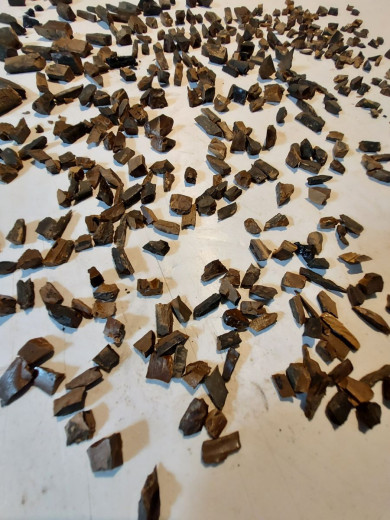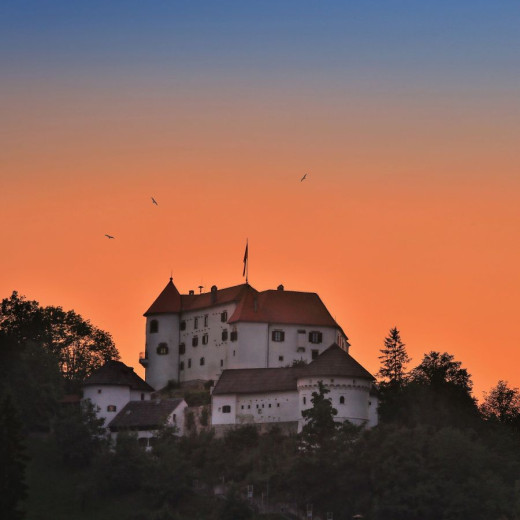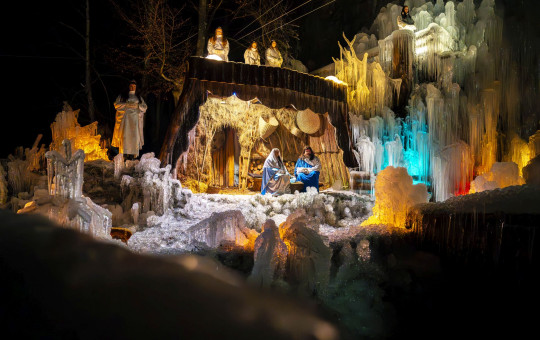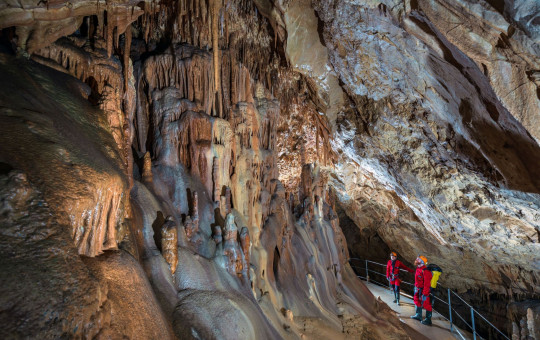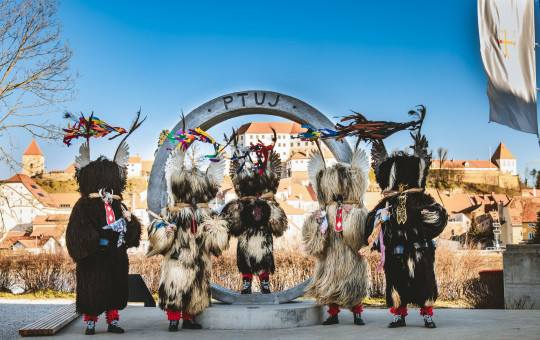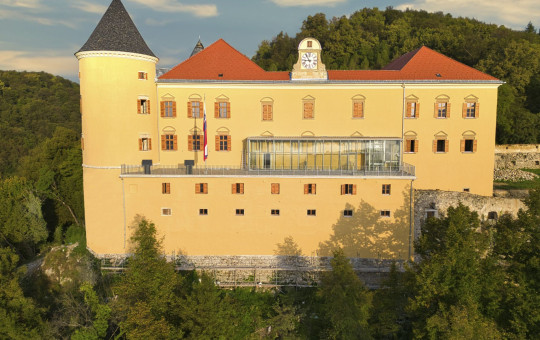Date: 9. October 2025
Time to read: 1 min
This September, miners working in the Preloge shaft of the Velenje mine made an extraordinary discovery — fossilised bones of a mastodon, an extinct ancestor of today's elephant. While paleontologists were not surprised by the find, as the Šalek Valley has long been recognised as a rich source of fossils from large Ice Age animals, each new discovery adds another chapter to the story of life on our land millions of years ago.
Mastodons and similar proboscideans lived after the dinosaurs had been wiped out by an asteroid but before the woolly mammoths familiar to humans appeared.
The miners in Velenje were amazed to find the bones of this ancient creature buried within layers of lignite about 400 meters below the surface.
Among the finds were two pieces of tusk, each about five centimetres in diameter: one larger, slightly curved piece of bone and another embedded within a larger lump of lignite. In addition, approximately one hundred small fragments, ranging from half a centimetre to two centimetres and also remnants of tusk, were recovered. Mastodons were large herbivorous mammals that somewhat resembled today's elephants but had differently structured teeth and a slightly shorter torso.
They lived during the Miocene and Pliocene epochs, roughly 5 to 2.5 million years ago, when the area now known as Slovenia was mostly covered with lush forests and wetlands.
These environments provided mastodons with abundant plant food and conditions favourable for the preservation of their remains until today.
-
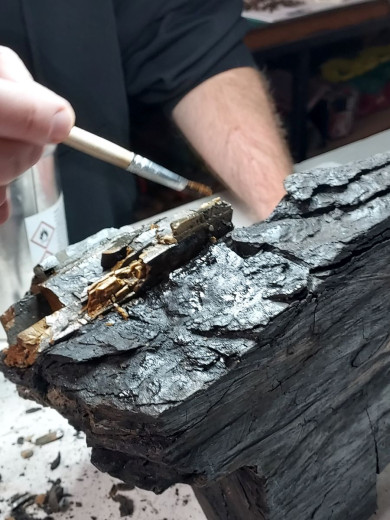 On 19 September 2025, fossilised animal bones were discovered during coal mining operations at the Velenje Coal Mine. Due to the excavation process, the bones were fragmented and only partially preserved. Photo: Stojan Kneževič
On 19 September 2025, fossilised animal bones were discovered during coal mining operations at the Velenje Coal Mine. Due to the excavation process, the bones were fragmented and only partially preserved. Photo: Stojan Kneževič
-
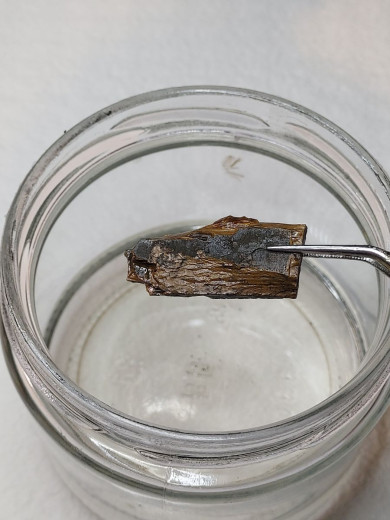 The finds were temporarily handed over to the Velenje Museum for conservation, as there is a risk that they could deteriorate rapidly due to exposure to air. Photo: Stojan Knežević
The finds were temporarily handed over to the Velenje Museum for conservation, as there is a risk that they could deteriorate rapidly due to exposure to air. Photo: Stojan Knežević
This is not the only such find
This is not the first discovery of its kind in Slovenia. The history of research in Škale near Velenje shows that miners uncovered remains of two mastodon species – Borson's mastodon and Anancus arvernensis – as early as 1964.
Both species lived around three million years ago, at a time when the climate was beginning to cool and the ice ages were gradually shaping today's Europe.
Borson's mastodon was a true giant of its time: males weighed up to 28 tonnes and reached nearly five meters in height. Their mighty tusks, several metres long, were used both for feeding and for battles over dominance.
Beyond the Šalek Valley, mastodon fossils have also been found in other parts of Slovenia.
In Slovenske Gorice, researchers discovered a fossilised mastodon tooth, and in Goričko, a tooth of a Deinotherium, another fascinating ancestor of today's elephants, known for its distinctive downward-curving tusks. These finds demonstrate that was once home to various species of proboscideans in prehistoric times and that Slovenia, despite its small size, is a true treasure trove of paleontological finds.
-
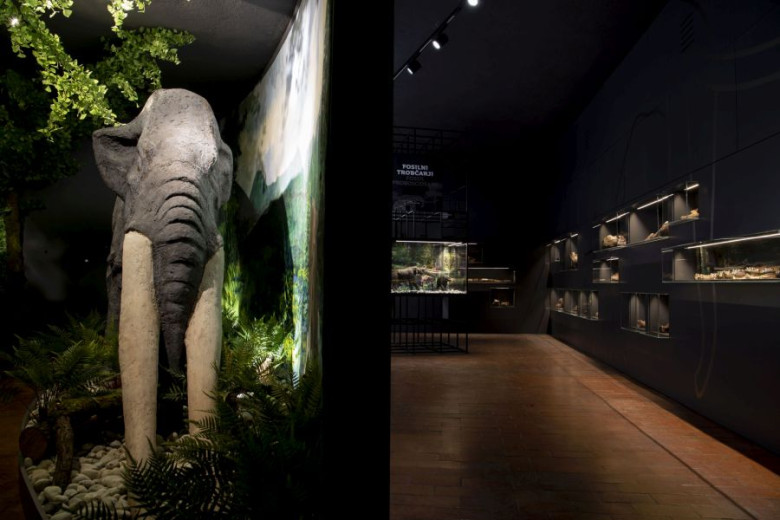 The Mastodons exhibition at Velenje Castle is divided into two sections. The scientific section features original bones alongside a timeline of evolution, while the immersive section presents a life-sized reconstructed statue of Anancus arvernensis set within a natural environment. Photo: Tanja Verboten
The Mastodons exhibition at Velenje Castle is divided into two sections. The scientific section features original bones alongside a timeline of evolution, while the immersive section presents a life-sized reconstructed statue of Anancus arvernensis set within a natural environment. Photo: Tanja Verboten
-
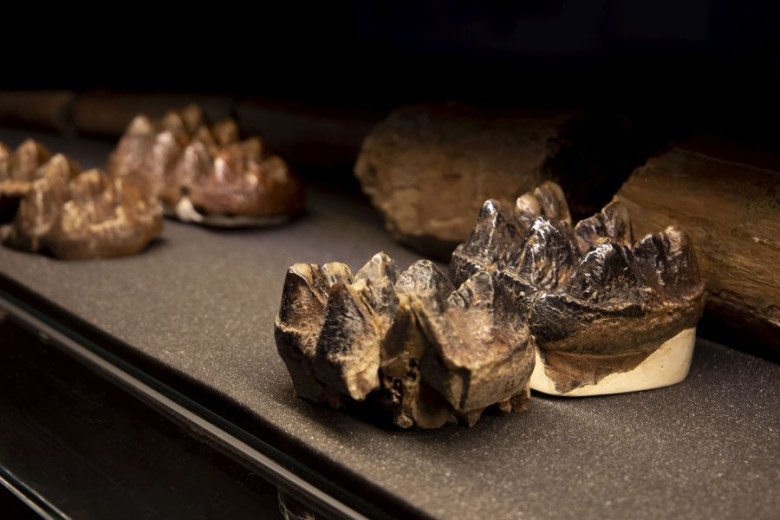 In 1964, extensive earthworks were made in Škale pri Velenju due to the sinking of the land. One of the engineers found remains of large bones. Paleontological research showed that the discovered bones, tusks and other parts of teeth belonged to proboscideans, which had inhabited the Šalek Valley approximately 3 million years ago. Photo: Tanja Verboten
In 1964, extensive earthworks were made in Škale pri Velenju due to the sinking of the land. One of the engineers found remains of large bones. Paleontological research showed that the discovered bones, tusks and other parts of teeth belonged to proboscideans, which had inhabited the Šalek Valley approximately 3 million years ago. Photo: Tanja Verboten
-
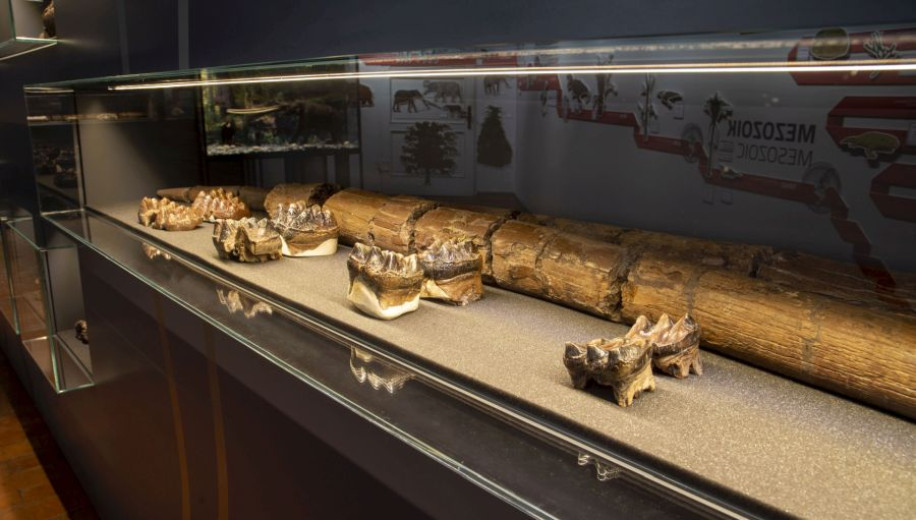 The collection displays three tusks, other teeth and parts of skeleton, while there are also some fossilized remains of fruits from the plants of that time which represent the flora. Photo: Tanja Verboten
The collection displays three tusks, other teeth and parts of skeleton, while there are also some fossilized remains of fruits from the plants of that time which represent the flora. Photo: Tanja Verboten
The remains found in the Velenje mine are currently undergoing preparation and conservation at the Velenje Museum, where experts are carefully cleaning, consolidating and preparing them for further research and eventual exhibition.
Fossilised remains of proboscideans discovered in 1964 can already be viewed in the permanent exhibition "Mastodons" at Velenje Castle, where bones, teeth and reconstructions offer visitors a fascinating insight into the lives of these magnificent creatures.
Each new discovery is not only exciting for the public but also represents an important scientific contribution to our understanding of the development of life in this region. Mastodon fossils help us understand past climate change, the evolution of vegetation and the diversity of the animal life.
They reveal stories of ancient forests, rivers and meadows, as well as extinctions and adaptations that shaped the natural world as we know it today.
Slovenia's rich natural heritage
Such discoveries also remind us of Slovenia's rich natural heritage. Often the greatest secrets of the past lie hidden just beneath our feet – preserved in layers of coal, clay and sand that hold memories of the world's former giants.

